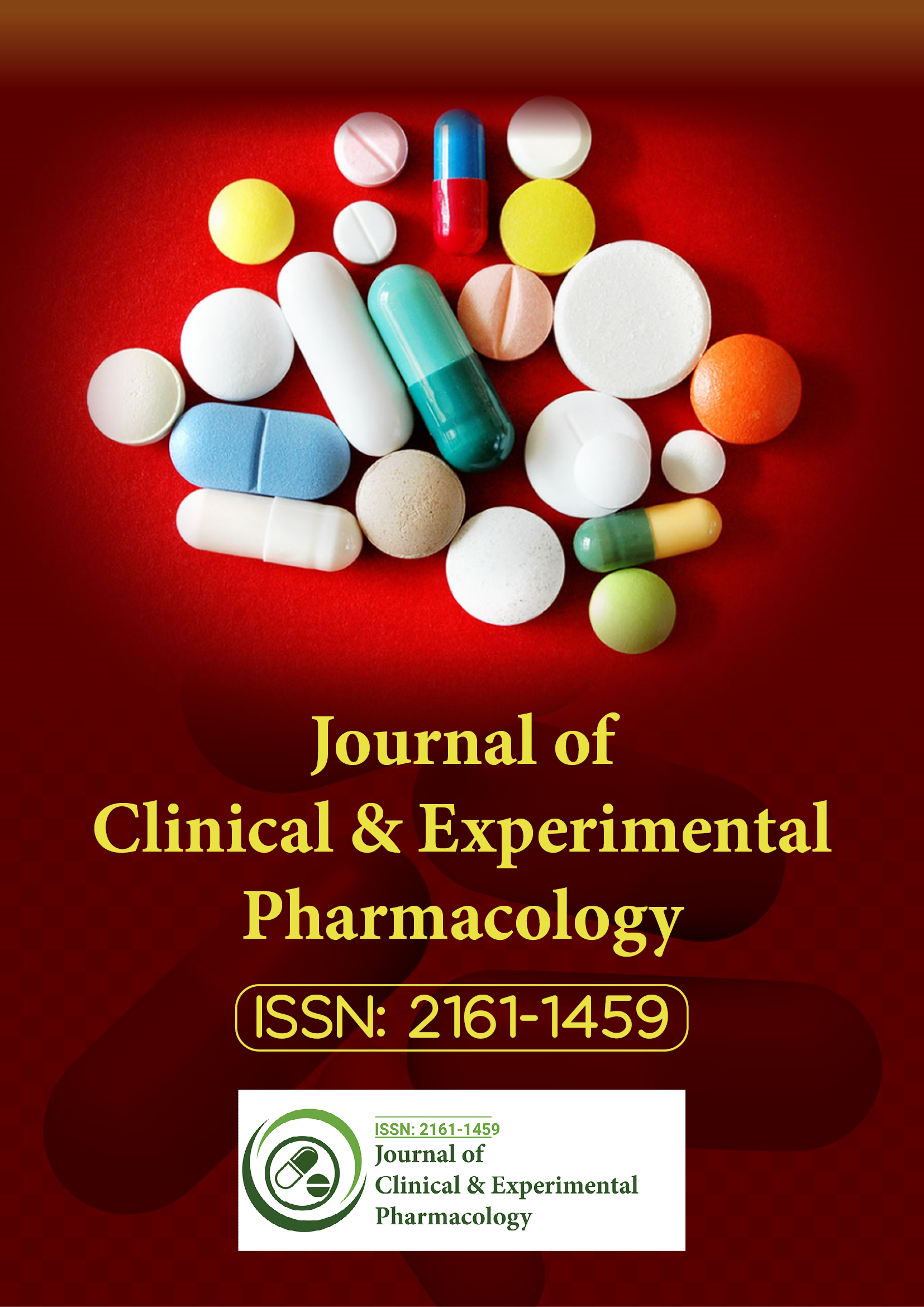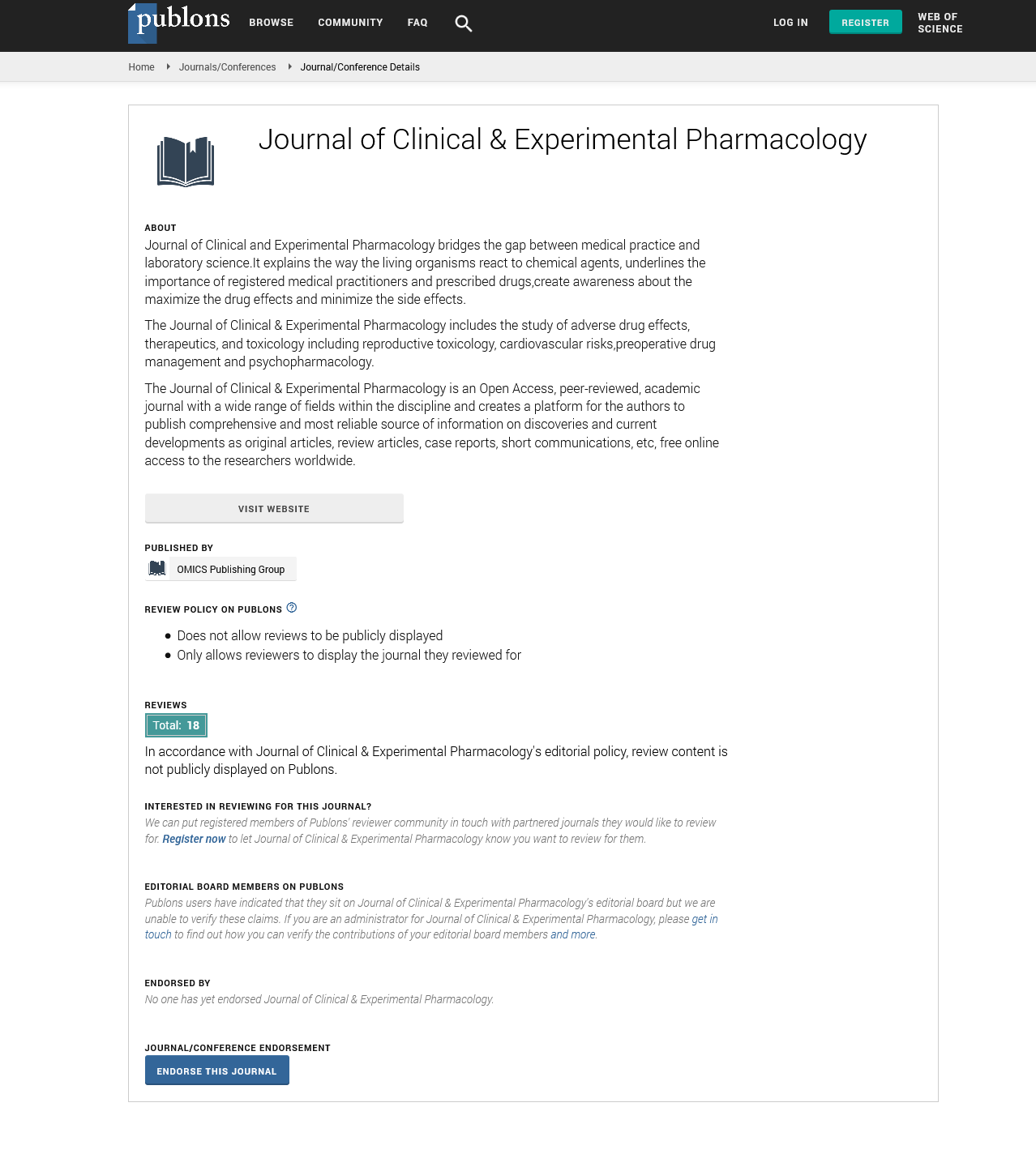Indexed In
- Open J Gate
- Genamics JournalSeek
- China National Knowledge Infrastructure (CNKI)
- Ulrich's Periodicals Directory
- RefSeek
- Hamdard University
- EBSCO A-Z
- OCLC- WorldCat
- Publons
- Google Scholar
Useful Links
Share This Page
Journal Flyer

Open Access Journals
- Agri and Aquaculture
- Biochemistry
- Bioinformatics & Systems Biology
- Business & Management
- Chemistry
- Clinical Sciences
- Engineering
- Food & Nutrition
- General Science
- Genetics & Molecular Biology
- Immunology & Microbiology
- Medical Sciences
- Neuroscience & Psychology
- Nursing & Health Care
- Pharmaceutical Sciences
Commentary - (2025) Volume 15, Issue 1
Molecular Targets in Uric Acid Metabolism and Inflammatory Pathways
Samuel Chen*Received: 29-Jan-2025, Manuscript No. CPECR-25-28881; Editor assigned: 31-Jan-2025, Pre QC No. CPECR-25-28881 (PQ); Reviewed: 14-Feb-2025, QC No. CPECR-25-28881; Revised: 21-Feb-2025, Manuscript No. CPECR-25-28881 (R); Published: 28-Feb-2025, DOI: 10.35248/2161-1459.25.15.461
Description
Hyperuricemia, a metabolic disorder characterized by elevated serum uric acid levels, poses a growing global health concern due to its close association with gout, renal dysfunction and cardiovascular diseases. Despite the availability of pharmacological interventions such as allopurinol and febuxostat, these drugs are often linked with adverse effects and limited long-term efficacy. Consequently, researchers are increasingly turning toward natural products for safer, multi-targeted therapeutic strategies. In this context, the recent study explaining the molecular mechanisms of saffron petals in the treatment of hyperuricemia using a combination of network pharmacology and experimental verification presents an exciting development in ethnopharmacology and precision herbal medicine.
Saffron (Crocus sativus L.), traditionally known for its use in culinary and medicinal contexts, yields stigmas as its primary commercial product. However, the petals usually discarded as agricultural waste contain an array of bioactive compounds including flavonoids, anthocyanins and carotenoids. The study under commentary will explain the underutilized therapeutic potential of these petals, identifying their multifaceted role in managing uric acid metabolism and related inflammatory responses.
Network pharmacology offers a systems-level approach to dissect the complex interactions between natural compounds and human biological pathways. In the saffron petal study, a bioinformatics pipeline was employed to identify key bioactive molecules, predict their potential targets and map these interactions onto relevant disease pathways. The findings revealed several target proteins involved in urate transport and metabolism such as Xanthine Oxidase (XO), Urate Transporter 1 (URAT1) and GLUT9 as likely mediators of saffron’s therapeutic activity. Additionally, network analysis highlighted inflammatory and oxidative stress-related signaling cascades, including NF-κB and Nrf2, as auxiliary targets potentially modulated by saffron petal constituents.
This polypharmacological profile is particularly valuable in hyperuricemia, where uric acid overproduction and underexcretion often coexist with systemic inflammation and oxidative damage. The capability of saffron petals to modulate multiple aspects of disease pathophysiology may provide a more comprehensive therapeutic effect than conventional monotherapeutics.
What elevates this study beyond theoretical modeling is its experimental validation. Using an in vivo hyperuricemia model, the researchers demonstrated that saffron petal extract significantly reduced serum uric acid levels and attenuated renal histopathological damage. Importantly, the extract exhibited inhibitory activity against XO, a key enzyme responsible for uric acid generation and appeared to modulate renal transporter expression lending credibility to the computational predictions. Furthermore, reductions in inflammatory cytokine levels and oxidative stress markers provided additional biochemical confirmation of the anti-inflammatory and antioxidant effects of saffron petal components.
Several aspects of this research deserve commendation. Firstly, the integrative approach melding computational predictions with wet-lab experiments strengthens the reliability and translational value of the findings. Secondly, by valorizing agricultural by-products (saffron petals), the study promotes sustainability and adds economic value to saffron cultivation. Lastly, the work aligns well with the growing trend of developing multi-targeted natural therapeutics based on traditional knowledge and modern science.
Nonetheless, certain limitations warrant discussion. The identification of active compounds was limited to those with available public data, potentially excluding important, uncharacterized constituents. Moreover, while the in vivo model supports efficacy, future work should consider clinical trials to assess bioavailability, safety and dosage optimization in human subjects. There is also a need to explore possible herb-drug interactions, especially since patients with hyperuricemia often receive polypharmacy.
In conclusion, this study convincingly positions saffron petals as a potential, sustainable and scientifically supported therapeutic candidate for hyperuricemia. The integration of network pharmacology with experimental models paves a pathway for developing evidence-based, multi-targeted treatments from botanical sources. As research continues to uncover the mechanistic intricacies of plant-derived therapeutics, saffron petals may well transition from agricultural waste to clinical remedy, providing hope for a safer, more comprehensive approach to managing uric acid disorders.
Citation: Chen S (2025). Molecular Targets in Uric Acid Metabolism and Inflammatory Pathways. J Clin Exp Pharmacol. 15:461.
Copyright: © 2025 Chen S. This is an open-access article distributed under the terms of the Creative Commons Attribution License, which permits unrestricted use, distribution and reproduction in any medium, provided the original author and source are credited.

